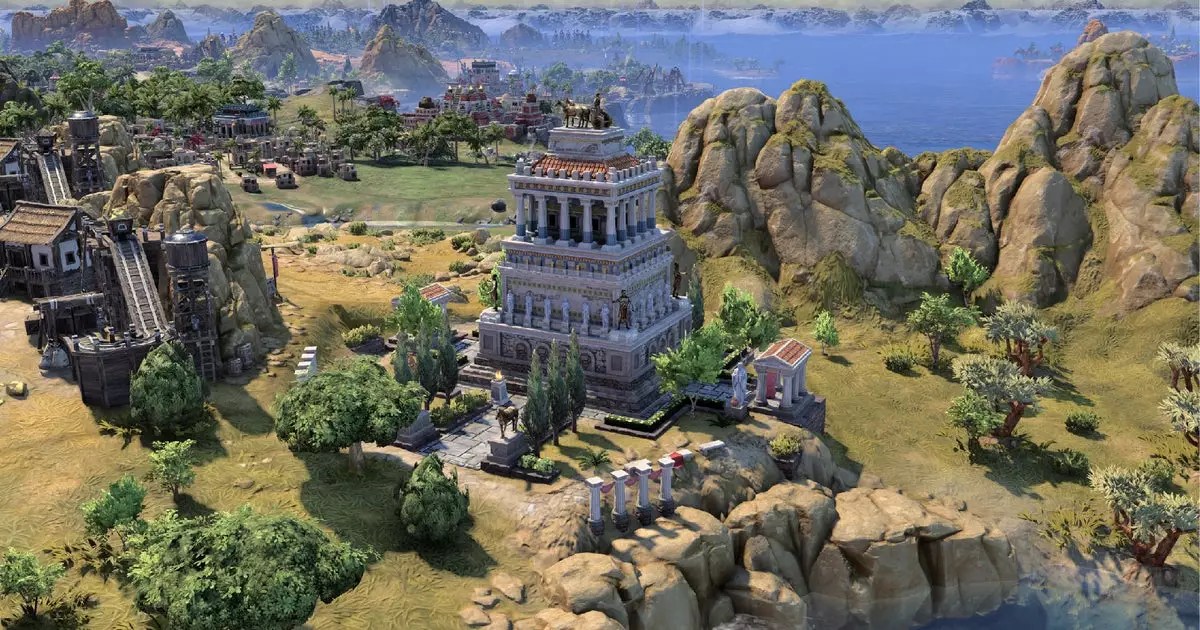In the world of grand strategy games, change is often a double-edged sword. The recent update to Civ 7, staged as version 1.2.4, exemplifies this reality perfectly. While dedicated gamers and modders celebrate its fresh content and gameplay tweaks, a closer inspection reveals a deliberate shift in the game’s architecture—an ambitious move aimed at future growth, yet one that has temporarily fractured the community’s experience. Firaxis’ decision to overhaul the UI workflow signifies a bold step forward, but it comes with immediate teething problems, notably a wave of broken mods.
This scenario underscores a critical truth in modern game development: ambitious technological upgrades, especially those touching core systems like UI frameworks, often create collateral damage. Firaxis’ explanation confirms that the transition to a more reactive and flexible interface was necessary to ensure long-term stability and innovation. However, the “rougher than most” nature of this update poses questions about how developers balance innovation and stability, especially when a dedicated fan base relies heavily on community-created content. While players can revert to older versions through Steam’s beta system, this temporary fix reveals an underlying tension between pushing technological boundaries and maintaining a seamless user experience.
Content Balancing and Strategic Renaissance
Despite the technical upheavals, the update injects fresh strategic vitality into Civ 7’s gameplay, notably through a series of wonder rebalances and civ-specific adjustments. Wonders like the Erdene Zuu are now accessible earlier, which deepens early-game tactical options for players who favor religious and cultural victories. Meanwhile, the repositioning of classical wonders such as the Colossus and Monks Mound within different civic branches reflects a nuanced effort to diversify strategic pathways, encouraging more varied playstyles.
These tweaks illustrate a core philosophy: to create a more dynamic, unpredictable game environment where victories are earned through more than just stacking the same overpowered wonders. The nerfing of iconic structures like the Gate of All Nations and the House of Wisdom is a reminder that balance remains paramount. Previously, some of these buildings presented unintentional shortcuts to victory, diminishing challenge and strategic depth. Adjustments to these elements serve as a wake-up call that even fan-favorite features require vigilant oversight to prevent them from undermining gameplay integrity.
Furthermore, the updates to age transitions and in-game influence systems aim to sustain long-term engagement, ensuring that alliances persist across ages and resources remain meaningful. These changes represent an acknowledgment that successful strategy involves continuity and adaptability—players must plan not just for immediate gains but for the broader arc of their civilization’s evolution. It’s a bold move, emphasizing long-term thinking over short-term exploitation, which substantially elevates the game’s strategic complexity.
Artificial Intelligence and Player Experience
On the AI front, Firaxis’ recent tweaks demonstrate a desire to escalate the challenge and reduce erratic behavior. The AI opponents are now perceived as more competent, capable of resisting diplomacies that previously led to awkward, inexplicable alliances or betrayals. Such improvements are vital; a game’s AI can make or break the illusion of a living, breathing world. Firaxis appears committed to refining the AI’s logic, ensuring that diplomatic decisions align more realistically with in-game circumstances.
Equally important are a plethora of interface enhancements, which are crucial for streamlining gameplay and reducing frustration. The focus on UI responsiveness and clarity signals a player-centric approach, emphasizing that engaging with complex systems should be intuitive rather than cumbersome. This is particularly vital in strategy games, where clarity often determines success or failure. Firaxis’ transparent communication about these upgrades, coupled with their acknowledgment of the update’s roughness, fosters an environment of trust—an essential ingredient in maintaining a dedicated player community.
The Road Ahead: A Balancing Act
Ultimately, the recent Civ 7 update encapsulates a pivotal moment in the game’s developmental journey. It’s a calculated gamble—one that aims to future-proof the game through technological advancements while risking community fragmentation in the short term. The developers’ recognition of the mod-breaking consequences and their offer of rollback options suggest a responsible attitude, yet it also highlights the delicate balance between innovation and stability.
The question now is whether these foundational changes will yield dividends in gameplay quality and longevity. If Firaxis can navigate this transitional phase successfully, the game’s upcoming expansions and updates could benefit from a more robust, flexible framework. However, the community’s resilience and adaptability will be tested—will players accept the temporary chaos in exchange for a more refined, future-ready strategy game? Only time will tell, but what remains clear is that Civ 7 is on the cusp of a strategic reinvigoration that could redefine the genre for years to come.


Leave a Reply